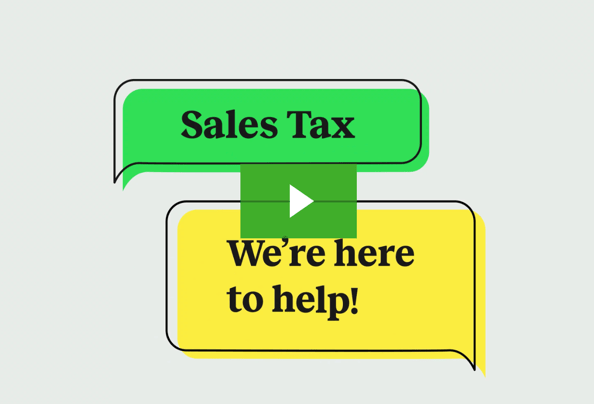How to Cut Back on Your Amazon Dependence
by November 1, 2020
Amazon is the world’s largest online marketplace and buyers use it as a go to source for all of their online shopping needs. With a wide range of categories and niche products, it is the perfect place for you to make your mark.
But if you are depending on Amazon as your only sales channel, you are putting your business in a precarious position. All it takes is for one thing to go wrong and your entire revenue stream dries up.
New competition is moving on to Amazon at all times and if they manage to divert even a small number of potential buyers, it could reduce your conversation rate and sales numbers which may decrease your best seller ranking. If your best seller ranking goes down, it is less likely that your listing will appear on the first page of an Amazon product search. And given that the majority of Amazon users buy from listings that appear on the first page, any decrease in ranking can hurt your profits.
And just to complicate things, Amazon has the power to restrict the sale of any item at a moment’s notice. This is particularly dangerous of you are a third party seller. If a brand decides they do not want their products sold via a third party, Amazon can disallow these sales and you are out of luck.
Amazon may also pose some complications for your business that might not just be a headache to deal with but could potential force you to shut down for a period of time. Using the FBA option may create a sales tax nexus for your business. It is not hard to stay on top of one tax nexus, but multiple fulfillment centers, in multiple states, can lead to multiple sales tax nexuses. If you fail to register for the proper paperwork or fail to collect the right amount of taxes, you could find yourself in a little bit of trouble.
This is not to say that Amazon is anything less than a wonderful place to sell your products, it is merely pointing out why Amazon should not be the only place where you sell your products.
In order to cut back on your Amazon dependency, here are a few things you can try:
Sell from your own website
One of the best ways to reduce your reliance on Amazon and still maintain a good volume of sales is to sell through your own website. You do not have to worry about compliance with Amazon’s listing policies and you are completely free to market your products as you see fit.
Selling on your own site gives you more control over everything. You do not have to worry as much about your competition coming in at the last minute and undercutting your price or winning the Buy Box. On your website, there is only you. This means it is up to you to impress and it is up to you to close the deal.
You are in complete control. You can choose your colors and layout and use whatever videos and images you wish. In this space you can really show off your personality and clearly define your brand voice.
But, having the prettiest website in the world is useless without visitors. It is important to make sure traffic flows to your website. The Amazon universe, large as it is, is somewhat self-contained. The users are buyers and are already prepared to spend their money. The web as a whole is an infinitely massive space and you may have to work a little harder to convince visitors that they need own your product.
Start by making use of keywords. Use them in your product titles and their descriptions. The more content you can create that contains these keywords, the better. Consider adding blogs, education pieces and “how to’s” to provide more reasons for someone might visit your page. This type of content can establish you as a thought leader and an authority in your niche or category. People are more likely to buy from you if they feel like you know what you are talking about.
Social media is another excellent way to get traffic to your website. With Facebook Business pages, there are many tools at your disposal that will help you reach the right audience. You can set up ad campaigns aimed at your followers or look alike audiences that link back to the products in your store or to other content on your site. Through your social media channels you can interact with your followers and potential buyers in a way that cultivates a trusting relationship with your brand, elevating the likelihood of a purchase.
Platforms like Shopify are an amazing place to start if you are looking to build your own store with minimal complications. Shopify gives you the freedom to design a beautiful looking space right on their existing platform. With a number of available plugins and features, the ability to set up the perfect shopping experience is right at your fingertips. Of course, if this task feels daunting to you or you simply do not have the time, you could always hire someone to set up your store for you.
Sell in other marketplaces
Create listings for your products in other marketplaces. Like Amazon, sites like eBay contain a wide range of buyers, in an equally wide range of categories. If you have a product that appeals to a small niche, list it on sites that appeal to that niche. For example, if you have an artisan product that is handmade and built to order, you might consider a marketplace like Etsy. Etsy buyers are geared towards unique, one of kind, items and are willing to pay a little more for the privilege.
Research these possible marketplaces as best you can to make sure your product fits the space. Once you’ve decided the channels you are going to use, make sure you spend time creating each listing. Because so much of your money comes from Amazon, it would be easy to think that these other channels are less important but if you devote to them the same amount of time you devote to Amazon, you will see your income grow there as well.
Make sure that you differentiate your listings across these different channels. Use language that is appropriate to the typical audience on each site. Know the personas of each site and tailor the listing to suit that persona. Differentiation is significant when it comes to Google search results. In a Google search, the most popular site is returned first and the rank of the others will be decreased. Most of the time, your Amazon listing will be the first result. If you have listings using the same keywords but different language, across a range of online marketplaces, you increase the chances that they will be the items that make up the rest of the page one results.
Amazon is a potential goldmine for you, there is no denying that, but to rely on Amazon alone for your income is a dangerous game and does not leave you holding much power. By creating your own online store and diversifying your sales channels, you ease some of the pressure on your Amazon listing and set yourself up with a more secure and sustainable business model that you can work for years to come.
About the Author
This is a guest post by Andrew Maff, Director of Marketing and Operations for Seller’s Choice, a full-service digital marketing agency for e-commerce sellers. Seller’s Choice provides uniquely personalized marketing and managed services for digital marketplace sellers, e-commerce merchants, and brand builders worldwide. You can learn more by emailing [email protected] or visiting here.
Feel free to contact Andrew on LinkedIn, Facebook, Twitter or Instagram with any questions.








